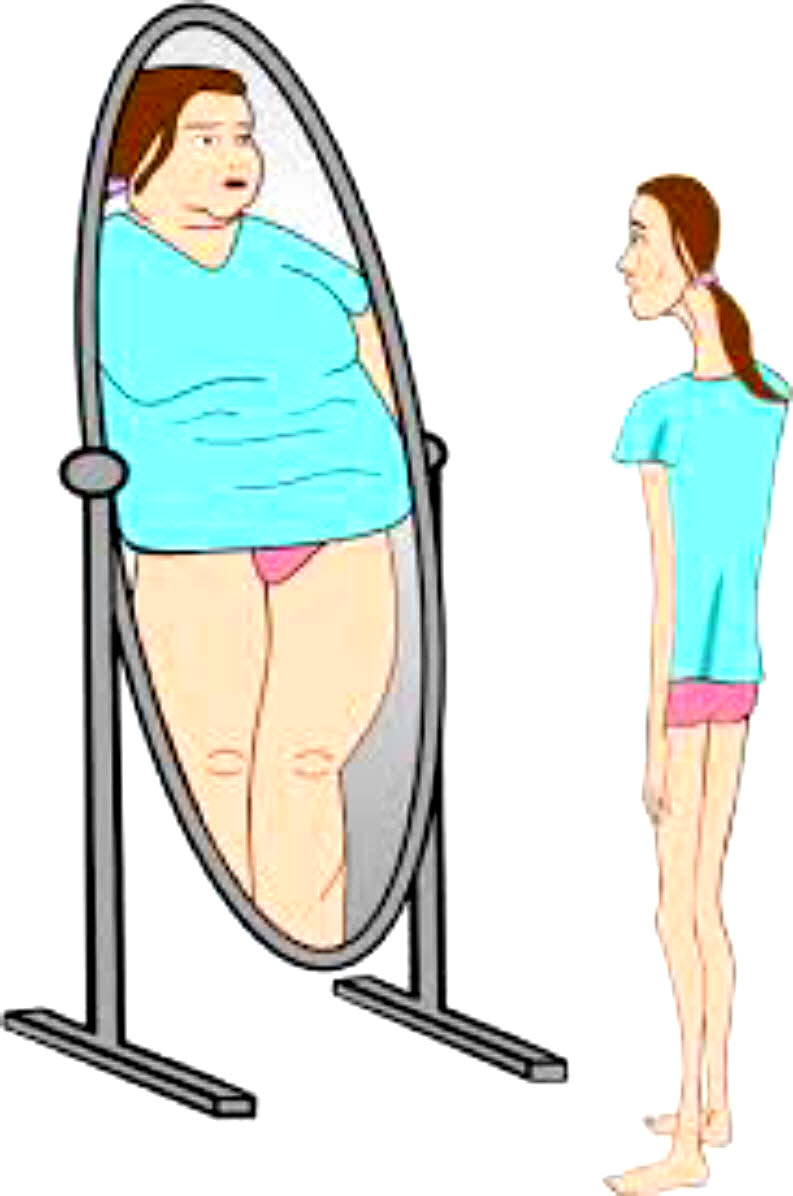Roberts, James R. MD

#JamesDonaldson notes:
Welcome to the “next chapter” of my life… being a voice and an advocate for #mentalhealthawarenessandsuicideprevention, especially pertaining to our younger generation of students and student-athletes.
Getting men to speak up and reach out for help and assistance is one of my passions. Us men need to not suffer in silence or drown our sorrows in alcohol, hang out at bars and strip joints, or get involved with drug use.
Having gone through a recent bout of #depression and #suicidalthoughts myself, I realize now, that I can make a huge difference in the lives of so many by sharing my story, and by sharing various resources I come across as I work in this space. #http://bit.ly/JamesMentalHealthArticle
Underlying psychiatric disorders and substance abuse have the strongest effect on #suicide, but #depression, bipolar illness, schizophrenia, and traumatic brain injury increase the odds of a completed #suicide threefold.
Previous attempts, #childhood sexual abuse, a family history of suicidal behavior, and the loss of a parent by #suicide in early #childhood also act as predisposing risk factors. Of course, obtaining this information can be difficult in the ED, and it often comes from a relative or friend who accompanies the patient to the ED.
Acute precipitating factors include relationship difficulties, especially with a partner, and a number of medical conditions. #Suicide is particularly common in the first week after a cancer diagnosis. The thoughts and actions of someone susceptible to #suicide are magnified by impulsivity and aggression, which increase the likelihood of acting upon suicidal thoughts. Impulsivity is a common component in most suicidal attempts.
#Physician #suicide in particular has been the object of psychiatric investigation. It is more common than one might expect, occurring in 30 per 100,000 individuals compared with 12 per 100,000 in the general population.
Taking Their Own Lives—The High Rate of #Physician #Suicide
Schernhammer E
This article was written by an epidemiologist whose physician-colleague died by #suicide. In fact, three #physicians in this doctor’s immediate circle also took their own lives the following year. Dr. Schernhammer said #suicide was never discussed openly, a serious analysis of the cause was never undertaken at her institution, and no specific safeguards were put into place. The deaths were simply a fact of medical life.
The rate of #suicide among #doctors is higher than that in any other profession. #Suicide among medical #students is also higher than among age-matched populations. #Female #physicians are also more likely to take their own lives than other #women. Studies suggest that the #suicide rate among #male doctors is 40 percent higher than among #men in the general population, but the #suicide rate among #female #physicians is 130 percent higher than that in #women in general. The number of successful #male #physician suicides, however, is about four times higher than the number of successful #female #physician suicides.
#Depression, which is more common in #physicians than nonphysicians, may contribute to the profession’s high #suicide rate. It has been suggested that #female #physicians have a higher rate of #depression, often exacerbated by sexual harassment. Being single and not having #children have also been linked to an increased risk of #suicide, and more #female than #male #physicians fall into those categories. Drug abuse and alcoholism also increase the rate of suicides, and #female #physicians have been shown to have a higher frequency of alcoholism than #women in the general population. Drug abuse is also high in #physicians, particularly among psychiatrists, anesthesiologists, and emergency #physicians.
The increased incidence of #suicide among #physicians is exacerbated by #socialisolation and because they often neglect the need for psychiatric, emotional, and medical help. #Stress and burnout are also added risk factors for all #physicians, with #female #doctors often feeling more #stress than their #male counterparts, perhaps because of the pressure to succeed in a male-dominated profession.
#Physicians also have more successful suicides, as opposed to unsuccessful attempts, than the general population. #Women in the general population have more unsuccessful #suicide attempts than #men, probably because they use methods that are typically less deadly. #Men tend to favor methods such as firearms, which is the most common method among #physicians (48%), followed by poisoning (23.5%), blunt trauma (14.5%), and asphyxia, which includes hanging (14%).
Clinicians who take their own lives commonly do it by poisoning, often with drugs taken from their offices or laboratories. Clinicians, of course, have greater access to drugs, and their medical knowledge enhances their ability to use such methods successfully. A large proportion of suicides in anesthesiologists involves anesthetic agents.
#Physician #Suicide: A Call to Action
This article describes some of the issues involving #physician #suicide. These authors noted that #mentalillness and burnout are epidemic in #physicians and medical trainees. One study found that 20 percent of medical residents met the criteria for #depression, and 74 percent met the criteria for burnout. Less than 15 percent sought treatment, however.
Residents with #depression are six times more likely to make medication errors than nondepressed residents. Burnout and #depression start early in medical training. Interestingly, medical students initially have lower levels of #depression and a higher quality of life than age-matched college graduates, but within months of medical school training, their rate of burnout and suicidality exceeds that of their peers. There appears to be something inherent in medical schools that contributes to a reduced quality of life and the emergence of #mentalhealthconditions. This trend continues and worsens in residency, fellowship, and beyond.
It is well known that #physicians are exposed to high levels of personal and professional #stress. They must make life-or-death decisions at work, and are constantly at risk for malpractice claims. Many clinicians struggle with marital conflict or issues at home because of work demands. #Physicians are also burdened by cumbersome electronic medical records, and stringent documentation requirements now occupy more work hours than patient care.
Substance abuse is a major risk factor for attempted and completed #suicide, and substance abuse and alcoholism are considered occupational hazards for #physicians. #Female #physicians have a higher rate of alcohol abuse than women in general, and substance abuse is particularly common among emergency #physicians, psychiatrists, and anesthesiologists. From medical school onward, clinicians are taught that there is no room for error, and they are expected to perform to exacting standards, are often faulted for showing vulnerability, and therefore avoid seeking help.
#Depression and suicidality are treatable, but most affected #physicians and trainees do not receive care, probably because of the #stigma around #mentalillness that remains pervasive in the medical community. Access to #mentalhealthservices is uniquely difficult for #physicians, and many communities have a shortage of psychiatrists and therapists. #Physician work schedules often preclude appointments during regular office hours. Many clinicians avoid medical care for their psychiatric problems because they feel it will affect their medical licensure. In fact, about three-quarters of state medical boards ask applicants about history of #mentalillness. #Mentalillnesstreatment also has implications for disability, life, and health insurance policies.
These authors discuss a way to address the estimated 300-400 #physician suicides per year, but relatively few strategies have been instituted or clinically evaluated. It is suggested that #physicians be taught to recognize the signs of #depression and #riskfactors for #suicide. The profession should also be addressing the sources of #physician burnout and drug addiction and supporting the implementation of lifestyle changes that lessen burnout, including regular exercise, meditation, and a healthy social life. Although difficult to implement, many organizations are attempting to transform professional attitudes and change institutional policies to encourage #physicians to seek psychiatric help. As barriers are removed and #physicians confront #depression and suicidality in their peers, they are more likely to recognize and treat these conditions in themselves.
Comment: As an emergency #physician for 45 years who has had a few periods of complete burnout, this was a discouraging subject to research. There is no question that emergency #physicians have a high rate of burnout and a higher rate of #suicide than many specialties. It is interesting to note that most clinicians who died by #suicide did not seek psychiatric care, and their deaths are often a complete surprise to colleagues.
The rate of #depression among clinicians, medical #students, and residents is amazingly high, greater than most would expect. The #stigma of self-reporting likely underestimates the documented prevalence of this condition. Clinician knowledge about lethal means and access to medications account for a far higher drug-related #suicide completion rate in clinicians than in the general public. #Physicians who die by #suicide are significantly more likely than nonphysicians to have self-prescribed antipsychotics, benzodiazepines, and barbiturates present on toxicology testing but not opioids, amphetamines, cocaine, or alcohol. Medications are also prescribed by a colleague who they are not seeing for medical care.
The inability to recognize #depression in a colleague is common. It is difficult for clinicians to ask for psychiatric care for many reasons. Unfortunately, #physicians who seek psychiatric care are often no longer able to practice because of discrimination by liability insurers or hospital staff. An emergency physician’s long and erratic working hours, changing schedules to include nights and weekends, having to make difficult decisions on a moment’s notice, and estrangement from support networks such as family certainly can increase #depression. Harassment and belittlement by professors and even #nurses contribute to the #mentaldistress of #students and can also be directed at clinicians.
A good solution to this problem is currently lacking, and #suicide in colleagues is often just not discussed. Burnout among emergency #physicians is extremely high, and working conditions and scheduling contribute to an already stressful situation. It seems to me that the only way to deal with potential #physician #suicide is to make it easier for clinicians to recognize and accept #depression and burnout and to seek psychiatric care in a way that will not compromise their ability to work as a clinician.
Numerous fantastic articles on #physician #suicide by Pamela Wible, MD, are available at www.Idealmedicalcare.org.
CME for InFocus!
Earn CME by completing a quiz about this article. You may read the article here, on our website, or in our iPad app, and then complete the quiz, answering at least 70 percent of the questions correctly to earn CME credit. The cost of the CME exam is $10. The payment covers processing and certificate fees.
Visit http://CME.LWW.com for more information about this educational offering and to complete the CME activity. This enduring material is available to #physicians in all specialties, #nurses, and other allied #healthprofessionals. Lippincott Continuing Medical Education Institute, Inc., is accredited by the Accreditation Council for Continuing Medical Education to provide continuing medical education for #physicians. Lippincott Continuing Medical Education Institute, Inc., designates this enduring material for a maximum of 1 AMA PRA Category 1 Credit™. #Physicians should only claim credit commensurate with the extent of their participation in the activity. This activity expires July 31, 2022.
Learning Objectives for This Month’s CME Activity: After participating in this CME activity, readers should be better able to explain how to identify risk factors for #physician #suicide.
Facts about #Physician #Suicide and #MentalHealth
- #Suicide is caused by multiple risk factors, the most common being untreated or inadequately managed #mentalhealthconditions and drug abuse.
- An estimated 300-400 #physicians die by #suicide in the #UnitedStates each year. It is likely that #suicide is underreported among #physicians.
- The #suicide rate among #male #physicians is 1.4 times higher than the general #male population. The relative risk is even more pronounced among #female #physicians—2.27 times greater than the general #female population.
- The successful #suicide rate is higher among #physicians than the general population. Data vary about whether #male or #female #physicians have a higher rate, but it is probably higher in #male #physicians.
- The #suicide rate is highest among anesthesiologists, surgeons, emergency physicians, obstetricians/gynecologists, and psychiatrists.
- #Physicians who took their own lives were less likely to be receiving #mentalhealthtreatment compared with nonphysicians who took their own lives.
- Twenty-eight percent of residents experience a major depressive episode during training as opposed to seven to eight percent of similarly aged individuals in the U.S. general population.
- The risk for #suicide among #physicians increases when #mentalhealthconditions are not addressed, and self-medication is used to address #anxiety, #insomnia, and other distressing symptoms. Self-medicating, mainly with prescription medications, may reduce some symptoms, but the underlying health problem is not effectively treated.
- As many as 23 percent of interns have suicidal thoughts. #Suicidalideation decreased by nearly 50 percent among interns who completed four sessions of web-based cognitive behavior therapy.
- Drivers of burnout, a key factor in #suicide among physicians, include workload, work inefficiency, #loneliness, lack of autonomy, scheduling issues, malpractice concerns, and work-home conflict.
- Unaddressed #mentalhealthconditions are more likely to have a negative impact on a #physician’s professional reputation and practice than obtaining #mentalhealth and #suicide counseling.
Adapted from the #AmericanFoundationforSuicidePrevention; https://bit.ly/2MqiJ6F.
Share this article on Twitter and Facebook.
Access the links in EMN by reading this on our website, www.EM-News.com.
Comments? Write to us at emn@lww.com.
Dr. Robertsis a professor of emergency medicine and toxicology at the Drexel University College of Medicine in Philadelphia. Read the Procedural Pause, a blog by Dr. Roberts and his daughter, Martha Roberts, ACNP, PNP, athttp://bit.ly/EMN-ProceduralPause, and read his past columns athttp://bit.ly/EMN-InFocus.



